Significant Objects launched one week ago — which means the auctions for our five opening-day items are ended.
Let’s take stock, shall we?
For all the items we’re listing, the opening price is the amount we paid for the object at a thrift store, yard sale, or whatever. The Sanka ashtray with story by Luc Sante was priced at $1, ultimately sold for $17.79. Matthew Battles wrote about a Candyland labyrinth game that cost a mere 29 cents. It sold for $11.50. The cow-shaped creamer with story by Lucinda Rosenfeld was $1, and sold for $26; The JFK bust that Annie Nocenti wrote a story about cost $2.99, and also went for $26. The 50-cent “Chili cat” for which Lydia Millet invented significance was purchased for $22.72.
Now, I would certainly agree with the comments to the Freakonomics blog’s item about this project that this not a new way for writers to make a living. But of course we never had any idea that someone would suggest such an interpretation: This is a creative project, not a business plan!
That said, let’s face it: People are finding new value in these Significant Objects. There are a lot of other things you can buy for $26, but bidders found enough significance in some of these things-with-stories to spend it here. Just for fun, consider the results in percentage terms. The Sanka ashtray was worth 1,679% more with Luc Sante-added significance. And Matthew Battles’ invented backstory to the Candlyand game boosted its value by nearly 4,000%!
Of course that’s just one way to measure such things. And it’s even harder to pick apart the exact nature of this new value. The story is a factor, and so, perhaps, is the devotion of a given storyteller’s fan base. The object itself comes into play: Some must be more pleasing on their own merits than others. And of course there’s secondary attention: Last week this project was written up in The New Yorker’s books blog, BoingBoing, and so on. How much impact does that have? Eyecube raised some interesting related questions about all this. (Others have, too, check the sidebar for more links to what others have said.)
What do you think? Please share your comments and theories.
Meanwhile, we’re very excited that people are in fact buying — the writers involved in this project contributed stories in a spirit of fun and adventure without knowing what would happen, and we of course want the amazing work they did to be appreciated. Two more auctions will end tomorrow, both pieces I like quite a bit: Mark Frauenfelder’s story about a miniature bottle, and Ben Greenman’s on a smiling mug. Also, if the prices I mentioned above sound intimidating, check out some of the other stories, because in my opinion there are still a number of surprising bargains.
And after all this talk about bidding and monetary value, it’s important to close with a different thought: This project is not about the profit motive. The contributors to Significant Objects are coming up with a startling array of great stories, and we’re publishing a new one every day. In fact James Parker’s story will be posted momentarily. So keep coming back to read and enjoy them, and even comment on them, whether you intend to bid or not.
Get stories daily by email by signing up here here, or follow Significant Objects on Twitter at @SignificObs
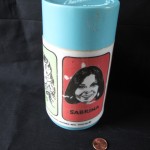

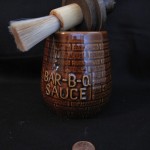
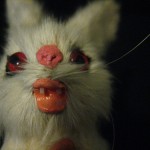
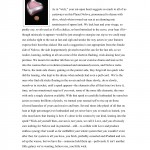
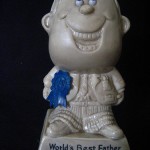
Rob,
Thanks for the link. I’d also wager that your (Rob’s) involvement has something to do with the interest – monetary or otherwise. I hope all the photos and stories, along with final Ebay bid info, is being archived for a compilation hardcover book – that would be very cool. As an added bonus, each limited edition comes with its own little item for the purchaser to make their own story. Whaddya say, Rob?
Rob – I agree with Rick that your involvement has much to do with the interest. But for me it’s all about the writers and stories and my love/hate relationship with the need to just HAVE an object. I confess: I am one of the lucky winners!
P.S. And yes, do a book.
I don’t know what to say about my involvement having any particular effect here. I think maybe it drew in, you know, the two of you. Which of course is huge.
We’d love for it to be a book, but commitments to specific bonus strategies would have to be contingent on the emergence of … a publisher.
Publisher? We don’t need no stinkin’ publisher! Self-publish on Lulu.com. Every person who won an auction gets it for price X, anyone else gets it for price X plus $25. Now there’s a new incentive for bidding.
Must…stop…thinking…like…marketer…
It was with much interest that I read of the Significant Objects project. Last year the collaborative art duo Goatsilk—Ben Bloch and Caroline Peters—launched a nearly identical project, not as writers, but as visual/new media artists. This is from their project statement:
I think the parallels to the Significant Objects project are evident, with a difference of profile. My own area of scholarship is not in contemporary art, and I’m making no claims for the relative strengths or weaknesses of either project (full disclosure: Bloch and Peters are friends). But there’s no denying that name recognition and access to major media outlets plays a vital role in the value that the objects in either project are able to accrue. In truth, the issues raised here are not so much about financial capital, but about artistic and symbolic capital (as the comments above begin to suggest).
As an art historian (in the midst of preparing for a course on “Art and the Public Sphere”) these questions are very much on my mind. In the Eighteenth century (my area) a burgeoning media culture was the key component in creating even the possibility for art as we know it now, but the ideals of democracy/meritocracy replacing aristorcracy were, of course, far from realized. I love the internet, love web 2.0, love the fact that complex projects such as Significant Objects and Daily Treasures exist. I also wonder where the limits to that complexity lie, something that contemporary scholars and critics have examined far more actively than myself. But if projects such as this can raise the question of limits, I suppose we’re on track.
Lela Graybill
Asst. Prof. of Art History
University of Utah
Hello Lela Graybill,
First, thanks for the info about Daily Treasures. Neither of us had heard of it, and it looks interesting. I’ll check it out more thoroughly soon. As someone who has spent many years writing on the subject of material culture, I’m always excited to hear about others exploring that territory.
Clearly there’s a long history of exploring the relationship between things and value; there other projects more or less in this ballpark, before your friends’ project, and I’m sure there will be more in the future.
Looks to me like what your friends did wasn’t “nearly identical,” though. On the value side, we chose to use thrift-store objects so there would be a set starting point — as opposed to starting with found objects, or trash. We also set out to be explicitly collaborative: Rather than us just making up things, we decided to try to get the best story-inventors we could work with. Finally, let’s not forget that Significant Objects is largely about writing. I feel strongly that the stories from our contributors have been consistently great, and that’s getting overshadowed in some of these comments. To bring it back to value: Part of what we’re doing here is bringing new value into the world in the form of these stories themselves.
I agree that there’s not much point in saying one project is better than the other, per se, since the execution and I think the intent of each are pretty distinct. I only had time to look at a few of your friends’ videos today, but I look forward to watching more. Always good to learn about a project I hadn’t heard about.
My apologies! There was no accusation in there, I honestly am just in the midst of preparing for my Fall semester course, the Goatsilk project was on my mind because I’m always looking for ways to get students to deepen their understanding of (and interest in) the historical issues we’re talking about through contemporary examples, and I was excited by the parallels of the projects–I’m well aware that many projects of the past have, and that many in the future will, explore similar territory. That’s kind of my point… when 18th century artists began exploring hybrid genres (writers as much as visual artists) the terms of the debate changed. There emerged a space for critical and oppositional thought that was quite transformative for social and political life as we know it (I’m thinking in particular of the arguments in Tom Crow’s Painters and Public Life, or David Solkin’s Painting for Money here). Both the promise and the limitations of such a space are very much alive today.
I’m a historian and not a critic, so for me the interest lies in the cultural dynamics between artists and audiences, not concepts of “worth,” “originality,” “greatness” or “authenticity” that the art market is so frequently bound to (concepts which are dubious in and of themselves, as I think your project begins to suggest). Some of the comments in response to your project had raised the question of “what if” the same thing existed but without the same profile and distribution, I was just saying, hey, here’s a pretty good example of just that–again, as contribution to the dialogue, not some sort of territory-claiming.
I agree that it would be a shame for the real power and creativity of the art being produced were lost in the kind of age-old debates about the "value" of art narrowly conceived. In fact, the real historical precedent to be found here lies in the interest the surrealists had in using out-moded objects as a trigger for narrative (e.g. Nadja or l’Amour Fou), and the wonderful bleed between the textual and the visual that they produced. Such projects, both then and now, might help to teach us that "art" is not simply a story, an object, or an image, it’s the aesthetic experiences–of encounter and exchange, public and private, conscious and unconscious–that these stories, objects and images combine to create that constitute the real "stuff" of art. All of which becomes amplified in such new and interesting ways in a digital age.
Pingback: Project update: literature and commerce | Significant Objects
Lela is being very collegial to refer to us as friends (we worked at the same institution a few years back and happily have kept in contact), and indeed very collegial to mention our project at all. To the “don’t forget the art” pleas, I’d like to add “don’t forget the ebay!” I’ve always been interested in storytelling, and many of the collaborators on Goatsilk projects are professionals from various fields, including “writing.” I work under the name Goatsilk in large part *because* I think hybridity is so important (and entertaining). One of the reasons why Caroline and I have been interested in ebay (we did another project on it back in 2003, and I wrote a little piece about it as a columnist for the Missoulian in 2004) is that the “stories” of objects keep morphing and deepening indefinitely through creative gestures in the e-bay marketplace.
Rob, you’ve achieved something through the wide collaborative network of writers you’ve tapped for this project, but let’s not lose sight of the big idea, which lives under the broader umbrella of story-telling, or what my friend Brian likes to call “currency of story.” Who cares how that tale is delivered? Whether it’s writing, flashback film, or oral delivery? As long as it compels us to imagine the “the object” in some way that results in an upscaling of value. Lela’s point about profile, and access to media outlets, also distinguishes your project and effects the valuation of your objects. The more people that know about your endeavor, the more press it gets, the more people will watch and bid. In this sense the idea alone, or the notoriety of a particular writer/artist, has more impact than any particular story attached to a particular object. That adds to the story, it doesn’t detract. It’s fiction and reality all at once. I think ebay injects an element of contingency into story-telling that is otherwise difficult to achieve. And that contingency has everything to do with profile.
In sum? Ebay is killin’ it!
Lela, Ben —
Thanks for that, or those. All great points. Very happy to get such thoughtful feedback.
We do actually have some more narrative twists we hope to pull off in the weeks ahead. And I don’t mean to suggest we don’t look for attention. In fact we hope you’ll tell all your friends to read these great stories and bid on an object!
Anyway, very pleased to learn about your work; and the thoughts, information, and perspectives are all appreciated.
Rob
Hi Rob,
I just heard your interview on CBC Spark, and was absolutely fascinated by this project. I’m a freelance advertising copywriter looking to branch out into new media and would love to be involved with the Significant Objects project. I’ve attached my website, FYI.
Look forward to hearing from you,
Cheers,
Marcus Hildebrandt
Hi Marcus — Thanks very much! And … what do you have in mind? Actually I’ll just write to you and ask that, since it’d be more efficient than communicating here.